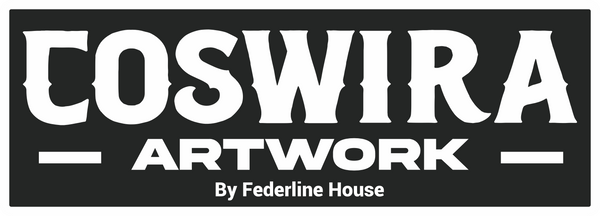Understanding EVA Foam Thickness - Choose EVA Foam for Cosplay Prop Build

When it comes to building cosplay props with EVA foam, one of the most important things to understand is foam thickness. Whether you’re making a large sword, a chestplate, or a detailed accessory, choosing the right thickness can make your build easier, cleaner, and more accurate.
In this article, we’ll break down the most common foam thicknesses, what they’re best used for, and how to mix them to get the best results.
📏 Common EVA Foam Thicknesses (And What They’re Good For)
Let’s start with the basics. EVA foam is typically sold in sheets of different thicknesses. Here are the most common sizes you’ll find and what they’re typically used for:
🔹 2mm Foam
Very thin and flexible. Best for fine details, wrapping edges, or layering over thicker foam to create surface texture. It bends easily and works well for things like raised patterns, trim lines, or panel detailing.
🔹 5mm Foam
A versatile mid-thickness foam. Good for small to medium props, armor segments, masks, and accessories. Easy to cut and shape. This is often a beginner’s go-to foam for general prop building.
🔹 8mm–10mm Foam
Thicker and sturdier. Great for building structural parts of armor, large weapons, or anything that needs to be durable and hold shape. You can bevel the edges for depth and still add some detail on top.
🔹 12mm–15mm Foam
Used for large props like big swords, hammers, or armor pieces that need to look chunky. It can be harder to shape and takes more heat to bend but is very strong and holds form well.
🧠 How Thickness Affects Your Build
Different thicknesses do more than just change the size of your prop — they affect how it behaves when you cut, bend, glue, and paint it.
- Detailing: Thinner foam is better for intricate work, but it’s not ideal for supporting weight.
- Shaping: Thicker foam needs more heat to shape, but it gives you smoother curves once it's set.
- Stability: Thicker foam creates a sturdier final product, especially for larger props.
- Weight: Thicker foam can get heavy. For large props, consider combining thick inner layers with lighter outer shells.
🎯 How to Choose the Right Thickness for Your Project
The best thickness depends on what you're building and how you want it to look. Here’s a quick guide:
- Small accessories (daggers, belts, trims): 2mm to 5mm
- Armor pieces (chestplates, bracers, shin guards): 5mm to 10mm
- Large weapons (swords, staffs, axes): 10mm to 15mm for the body, 5mm for added details
- Helmets and masks: Usually a mix — 5mm for most of the shape, with 2mm for surface layers
Pro tip: You can layer foams! For example, a 10mm base with 2mm designs on top adds both strength and visual depth.
🛠 Tools and Cutting Tips by Thickness
- Use sharp utility knives or box cutters — dull blades will tear the foam.
- For thin foam, scissors may work but can bend the edges.
- For thick foam, make several light passes instead of trying to cut through in one go.
- A heat gun helps shape thicker foam smoothly. Always test a scrap piece first.
✅ Final Thoughts
Foam thickness isn’t one-size-fits-all. By understanding how each size behaves and what it’s best used for, you can plan smarter and build props that look better and last longer. Don’t be afraid to mix and layer different thicknesses — most pro builders do!
So next time you download a pattern and prep your materials, take a minute to think about your foam choices. That one small step can make a huge difference in the final result.
🛠️ Ready to Start Your Build?
Browse our collection of **high-quality, printable cosplay prop patterns** – designed for foam crafting, easy to scale, and beginner-friendly. From swords and armor to full prop sets inspired by your favorite characters, we’ve got everything you need to bring your next cosplay to life.
